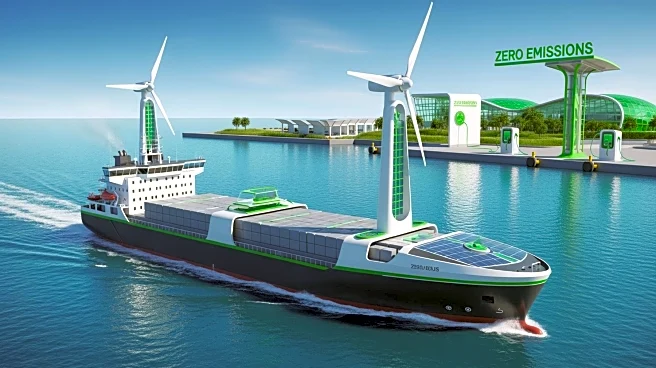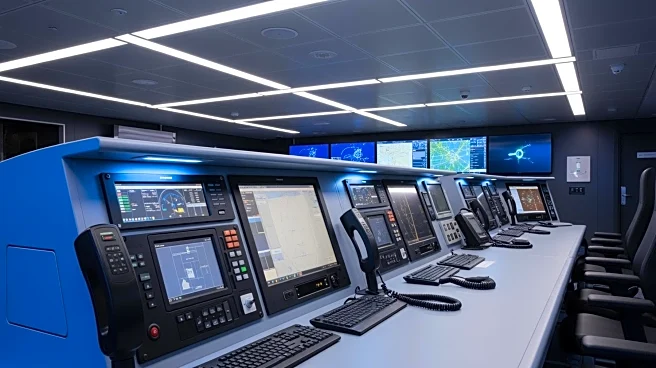What's Happening?
The Port of San Diego is establishing itself as a leader in maritime innovation and sustainability through a series of groundbreaking initiatives. Notably, it has introduced the first all-electric mobile harbor cranes in North America, which are transforming
cargo handling on the U.S. West Coast with their high lift capacity and efficiency. Additionally, the port operates the first all-electric tugboat, the eWolf, which significantly reduces emissions compared to conventional tugboats. The port was also among the first in the U.S. to install shore power for ocean-going vessels, allowing ships to plug into the local electrical grid instead of using diesel engines while docked. This initiative was implemented in 2010, ahead of state regulations aimed at reducing diesel emissions. Furthermore, the port adopted a Climate Action Plan in 2013 to decrease greenhouse gas emissions, reinforcing its commitment to sustainability.
Why It's Important?
The Port of San Diego's initiatives are crucial in setting a precedent for environmental responsibility within the maritime industry. By adopting cutting-edge technologies and sustainable practices, the port not only reduces its carbon footprint but also influences other ports and maritime operations to follow suit. The introduction of all-electric cranes and tugboats demonstrates a significant shift towards reducing reliance on fossil fuels, which is vital for combating climate change. These efforts also align with broader state and national goals for reducing emissions and promoting clean energy. The port's actions could lead to increased investment in green technologies and infrastructure, benefiting industries reliant on maritime transport and contributing to healthier communities by improving air quality.
What's Next?
The Port of San Diego is planning to develop the first public-facing zero emissions truck charging facility in San Diego County. This project is part of the port's Maritime Clean Air Strategy and its 'Health Equity for All' vision. The facility aims to support the transition to zero-emission vehicles, further reducing the environmental impact of port operations. As these initiatives progress, they may prompt other ports to adopt similar technologies and strategies, potentially leading to widespread changes in the maritime industry. Stakeholders, including environmental groups and local communities, are likely to monitor these developments closely, advocating for continued progress in sustainability.















